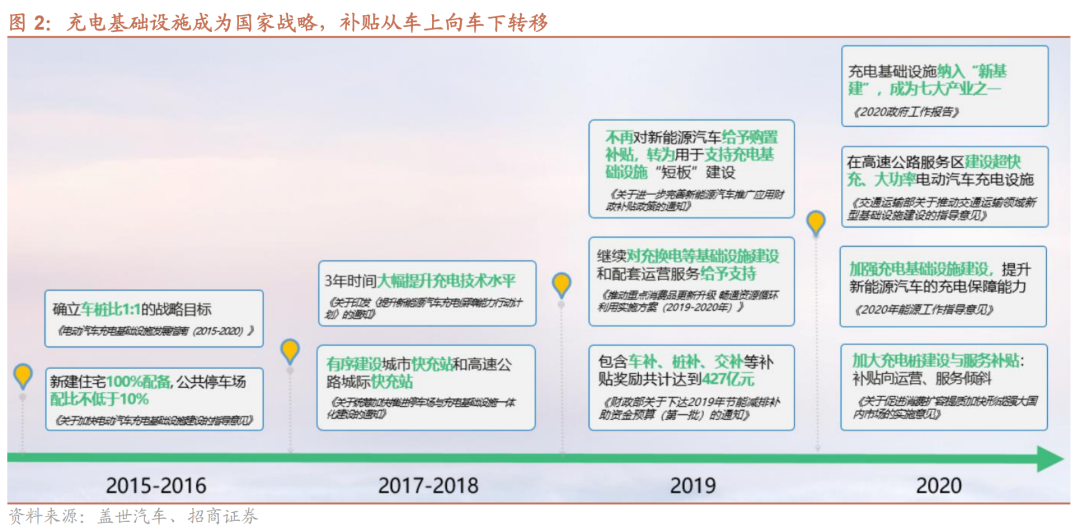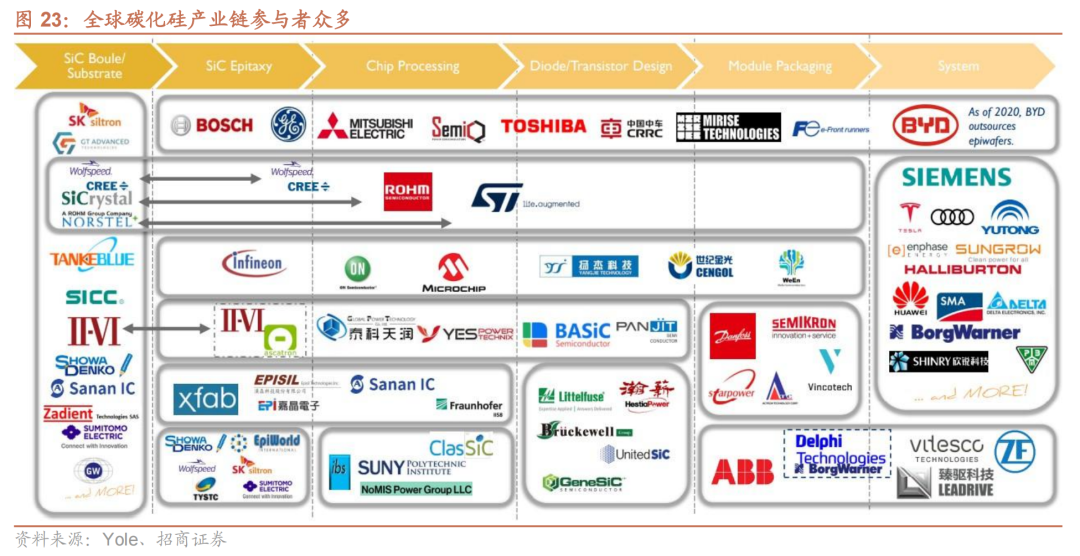The technical analysis of pure electric vehicle comprehensively and systematically introduces the technology of pure electric vehicle, including the basic knowledge of pure electric vehicle, such as the definition, composition, working principle, driving form, characteristics and typical examples of pure electric vehicle, as well as the power battery system, electric drive system, vehicle controller and performance and Simulation of pure electric vehicle. The book is based on engineering application and explained through a large number of pictures and specific examples to help readers master the theoretical knowledge required for the preliminary design of pure electric vehicles.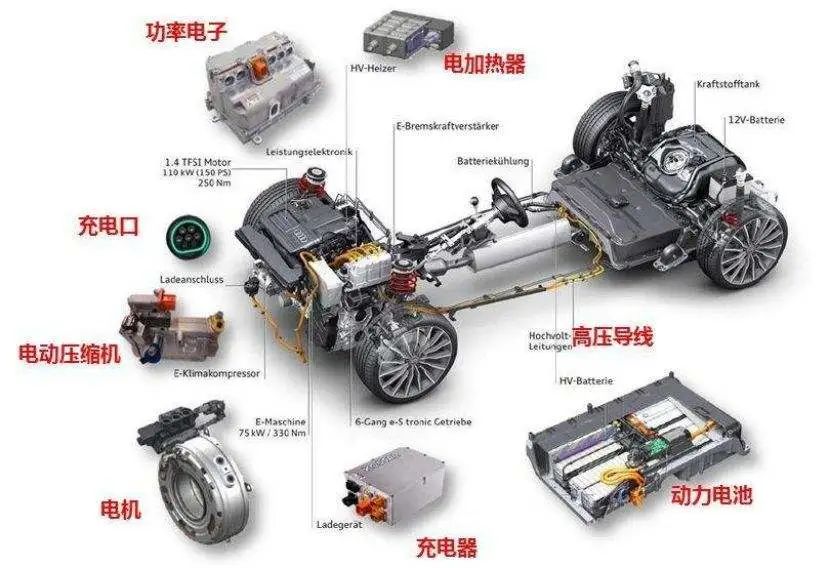
In April 2019, the Porsche taycan Turbo S was launched globally. With the birth of the first pure electric vehicle, there was also the largest 800V voltage platform. On September 23, 2020, Geely Group released the sea vast architecture, which also supports the 800V voltage platform. After that, BYD, Great Wall Motor, GAC group, Geely Automobile, Xiaopeng automobile and ideal automobile successively carried out 800V fast charging layout.
So what is this frequently occurring 800V voltage platform? In what aspects has it been upgraded? Wang Liusheng, chief analyst of China Merchants Securities automobile, released the Research Report "800V high voltage fast charging: value increment brought by systematic technology upgrading" on December 30 to answer these questions.
1、 High voltage fast charging has become an important solution to charging problems
1. Charging anxiety needs to be solved
Shortening the charging time is the key to improving the use experience of electric vehicles. When the subsidy is getting weaker and the thrust is getting smaller, the solution to accelerate the industrialization of electric vehicles should return to the essence: actively solve the practical application problems concerned by consumers. At present, the most concerned problems of consumers are battery life and charging. Nowadays, the battery capacity of new cars launched by car enterprises can reach 100kwh, and the endurance is usually around 500km, even as high as 700km. The endurance is no longer the biggest burden.
According to an experiment conducted in enabling fast charging: a technology gap assessment, during the 525 mile (1 mile = 1.6 km) journey, ordinary fuel vehicles only need to refuel once, with a total time of 8 hours and 23 minutes; The direct charging electric vehicle with a range of 200 miles and 50KW needs to be charged four times, each charging takes 40 minutes, and the journey takes 10 hours and 48 minutes; The 120kw direct charging electric vehicle with a range of 300 miles needs to be charged once. Each charging takes 68 minutes, and the journey takes 9 hours and 16 minutes; While the 400KW direct charging electric vehicle with a range of 300 miles only takes 23 minutes for a single charge, and the journey takes a total of 8 hours and 31 minutes. The overall time consumption is not less than that of the fuel vehicle.
It is the general trend to strengthen the construction of charging infrastructure and improve the charging experience. In terms of policy, charging infrastructure was included in the "new infrastructure" in the 2020 government work report, becoming one of the seven major industries; The guiding opinions on energy work in 2020 points out that it is necessary to strengthen the construction of charging infrastructure and improve the charging guarantee capacity of new energy vehicles; The guiding opinions of the Ministry of transport on promoting new infrastructure construction in the field of transport clearly stipulates that super fast charging and high-power charging vehicle charging facilities should be built in the expressway service area.
2. Chaoji fast charging standard will be implemented soon
The domestic Chaoji charging standard was released in 2021, and the super charging infrastructure was accelerated. Chaoji charging originates from China's high-power charging research and is promoted by exchanges with Germany and Japan. It can support 350kw-900kw high-power charging, with a charging voltage of 1000-1500v, a charging current of 500-600a, and an increase of more than 300km in 10 minutes.
The new generation of Chaoji charging technology originates from the high-power charging demand of electric vehicles, but it does not simply refer to the high-power charging interface, but a complete set of DC charging system solutions for electric vehicles. The project approval standard is expected to be completed by the end of 2021, and the pilot demonstration will be started. It is expected to be widely installed in 2025.
Chaoji charging standard has strong compatibility and is expected to unify multi-national standards. Chaoji technology solves a series of defects and problems existing in the international charging system, and provides a unified, safe, reliable and low-cost charging system solution for the world.
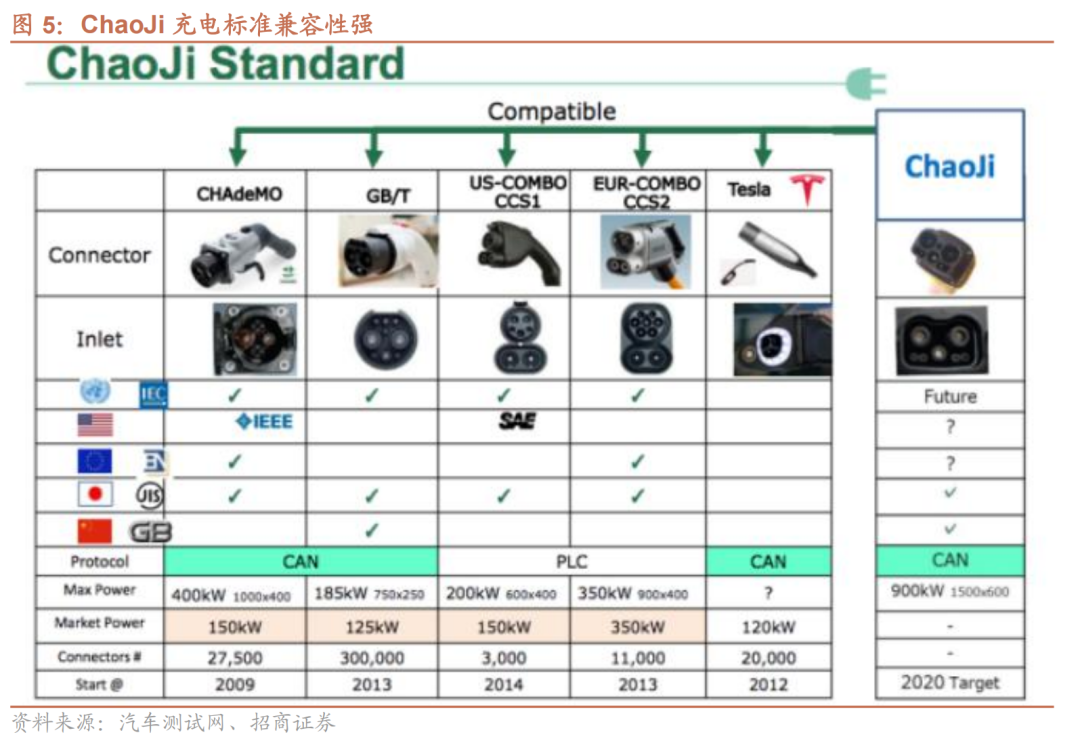
3.The high-voltage scheme has been approved by the vehicle enterprises
Car enterprises have laid out high-voltage fast charging schemes. To realize high-power charging, either increase the voltage or increase the current. According to the heat generation formula q = i2rt, the increase of the current will cause the heating of the electrical system to intensify, and the requirements for heat dissipation are very high.
At present, high-voltage fast charging has become the most popular choice in the industry. In 2019, Porsche's taycan launched the 800V high-voltage electrical architecture for the first time in the world. It is equipped with an 800V DC fast charging system and supports 350kW high-power fast charging. After entering 2021, the high-voltage fast charging route is favored by more and more main engine manufacturers. First, international giants such as Hyundai and Kia released the 800V platform, and then domestic main engine manufacturers such as BYD, great wall, GAC and Xiaopeng successively launched or planned to launch the 800V platform. The high-voltage fast charging experience will become an important standard for the differentiated experience of the electric vehicle market.
From the point of view of pile end, the maturity of high-pressure parts is high. The charging gun, wire, DC contactor and fuse need to be re selected. At present, there are mature products, and other parts do not need to be changed.
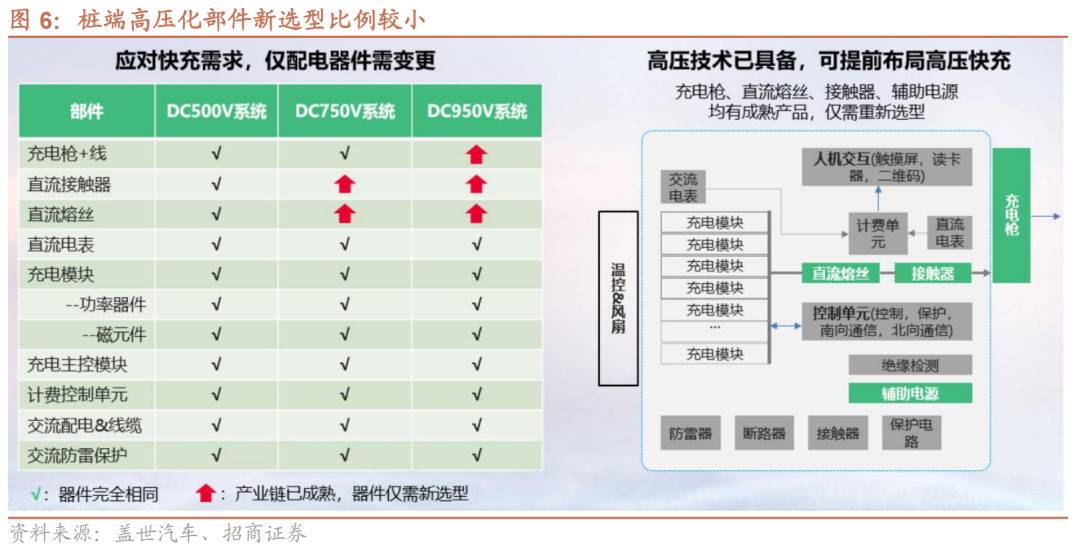
From the point of view of the vehicle end, the main high-voltage components need to be re selected. High voltage battery, BMS, electric drive, OBC, DC / DC, PTC, air conditioner, high voltage connector, etc. need to be re selected.
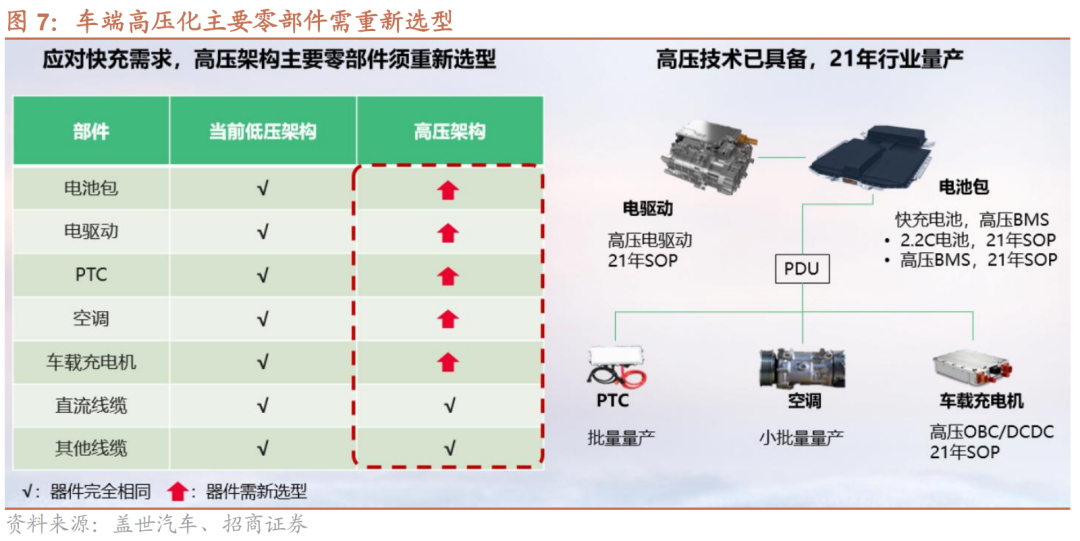 二、全系高压
二、全系高压
Fast charging is expected to become the Mainstream Architecture
At present, it is expected that there are three types of high-voltage system architectures that can realize high-power fast charging, and the high-voltage of the whole system is expected to become the mainstream:
(1) High voltage of the whole system, i.e. 800V Power Battery + 800V motor, electric control + 800V OBC, DC / DC, PDU + 800V air conditioner, PTC.
Advantages: the energy conversion rate is high, for example, the energy conversion rate of the electric drive system is 90%, and the energy conversion rate of DC / DC is 92%. If the whole system is high-voltage, it is not necessary to reduce the voltage through DC / DC, and the energy conversion rate of the system is 90%. If the voltage is reduced through DC / DC, the energy conversion rate of the system is 90% × 92%=82.8%。
Disadvantages: this architecture not only has high requirements on the battery system, but also needs to replace the power devices in electronic control, OBC and DC / DC with SiC MOSFETs. The voltage withstand performance of motors, compressors and PTCs needs to be improved. In the short term, the vehicle end cost will be increased. However, in the long term, after the industrial chain is mature and the scale effect is available, the volume of some parts will be reduced, the energy efficiency will be improved, and the vehicle cost will be reduced.
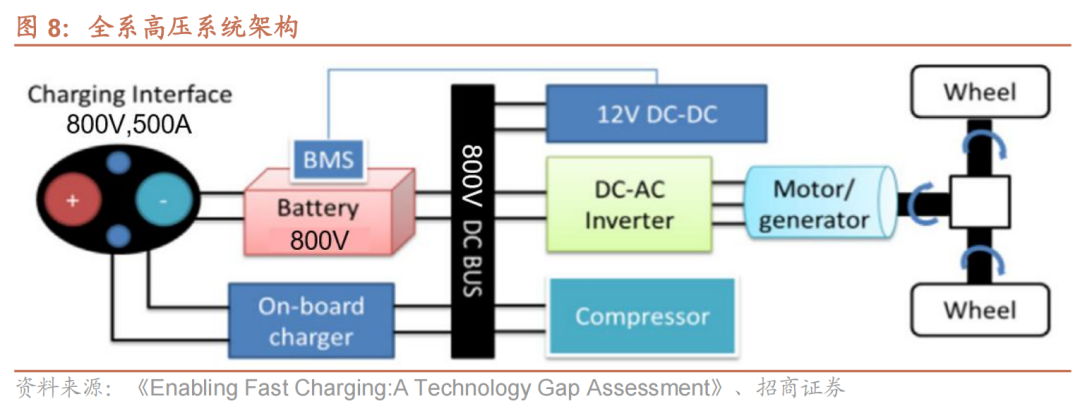
(2) Some high voltage, i.e. 800V Battery + 400V motor, electric control + 400V OBC, DC / DC, PDU + 400V air conditioner, PTC.
Advantages: the existing structure is basically used, and only the power battery is upgraded. The cost of vehicle end transformation is small, and it is practical in the short term.
Disadvantages: DC / DC voltage reduction is used in many places, resulting in large energy loss.
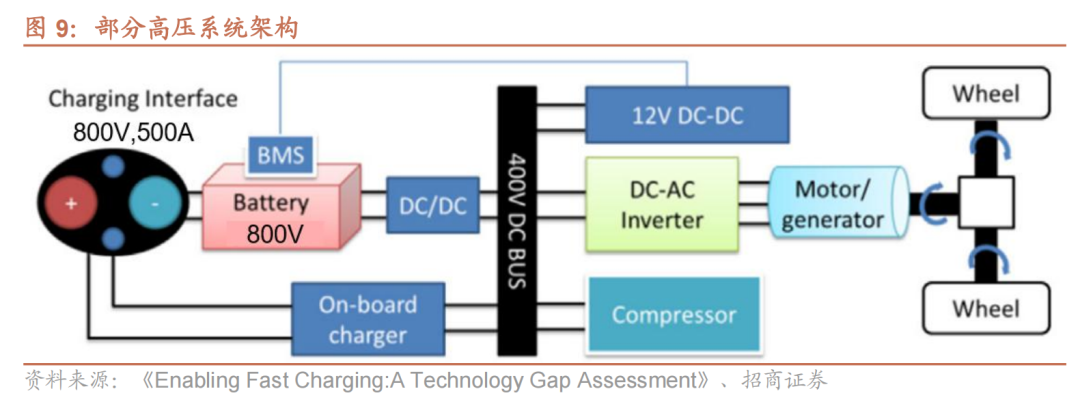
(3) All low-voltage structures, i.e. 400V battery (charging 800V in series, discharging 400V in parallel) + 400V motor, electric control + 400V OBC, DC / DC, PDU + 400V air conditioner, PTC.
Advantages: the transformation of the vehicle end is small, and the battery only needs to be transformed into BMS.
Disadvantages: the series connection increases, the battery cost increases, the original power battery is used, and the improvement of charging efficiency is limited.
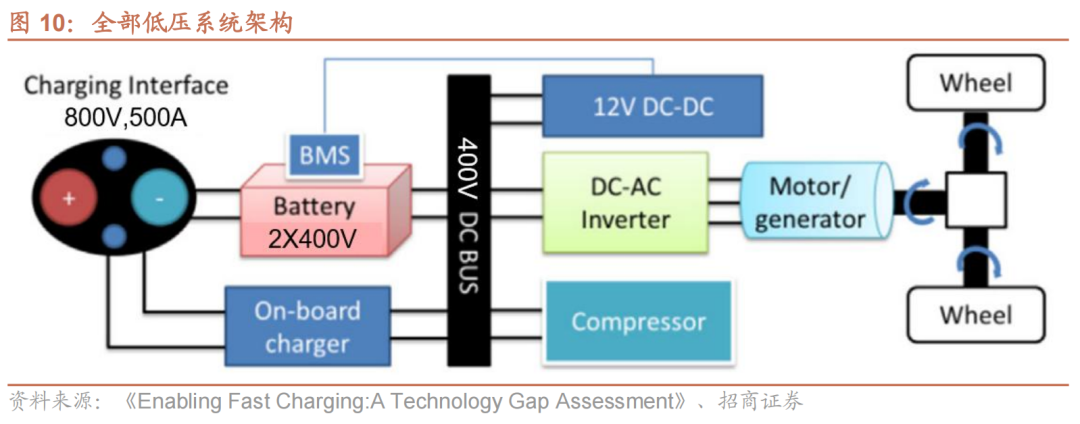
3、 Systematic technology upgrading brings multiple value increments
1. Power battery: battery cell, negative electrode and BMS technology upgrade
The consistency of electric cells is required to be improved. There are many series connected batteries on the 800V platform. If there are differences between the batteries, the service life of the batteries will be affected, and the requirements for the production process and consistency of the cells will be improved.
The negative electrode is modified or silicon carbon negative electrode is used. The constraint of fast charging performance of power battery lies in the negative electrode, which can be solved by graphite modification, that is, the surface is coated with and mixed with amorphous carbon. The amorphous carbon has a highly disordered carbon layer structure inside, which can realize the rapid embedding of Li +; Another method is to use silicon negative electrode, which has high theoretical capacity (4200mah / g, much larger than 372mah / g of carbon material), high lithium embedding potential - low risk of lithium evolution - and can withstand higher charging current.
The BMS tandem ratio increased. The 800V electric drive system battery pack requires twice the number of series batteries, so it requires twice the number of voltage detection channels of the battery management system.
2. Electronic control, OBC, DC / DC: power device upgrade, SiC demand increases
SiC MOSFET will accelerate the replacement of Si IGBT. In the 400V system, 650V, 750V or 900v power modules are basically used to meet the electric control requirements. In the 800V system, the electric drive platform is raised to 1000V or 1200V, and the maximum voltage borne by the IGBT module is about 650V. The SiC material has high withstand voltage and can reduce the loss. With SiC structure, the previous system will be subverted from hardware to software. The algorithm, hardware layout, including ECM of motor and high-voltage insulation system will also be upgraded.
There are many participants in the global silicon carbide industry chain. Old silicon-based power enterprises compete with emerging players. Each link of the silicon carbide industrial chain is similar to the silicon-based industrial chain, mainly including substrate (corresponding to silicon wafer), epitaxy, process manufacturing, design, module packaging, system application, etc. Old players include Infineon, ONSEMI, Rohm, St, etc. emerging enterprises specializing in silicon carbide field include Cree, SICC, basic, Zhongke Hanyun, etc., as well as main car manufacturers / Tier 1 enterprises such as BYD and Bosch. At present, the market share of silicon carbide based power devices is about 5%, and the industry is still in the early stage of development. The relevant technology selection, process route, customer binding and electric vehicle pattern are far from finalized, leaving enough space and time for domestic enterprises.
At present, Cree dominates the conductive silicon carbide substrate Market in the market. The silicon carbide epitaxial wafer market is monopolized by Cree and Showa denko. The silicon carbide power device market is dominated by overseas giants.
The whole industrial chain layout of domestic silicon carbide is expected to grow rapidly. The substrate manufacturers include Tianke Heda, SICC, Tongguang crystal, Dongni electronics, etc.; the epitaxial manufacturers include hantiancheng, Dongguan Tianyu, etc.; the design manufacturers include Shanghai Zhanxin, Shanghai Hanxin, etc.; the IDM manufacturers include Tyco Tianrun, Zhongke Hanyun, San'an integration, China Resources micro, etc. The domestic supply chain has layout in all links, while silicon carbide is still in the rapid growth stage, and the pattern has not yet been solidified. Domestic enterprises are expected to adjust the monopoly position of overseas giants by relying on the huge domestic demand market.
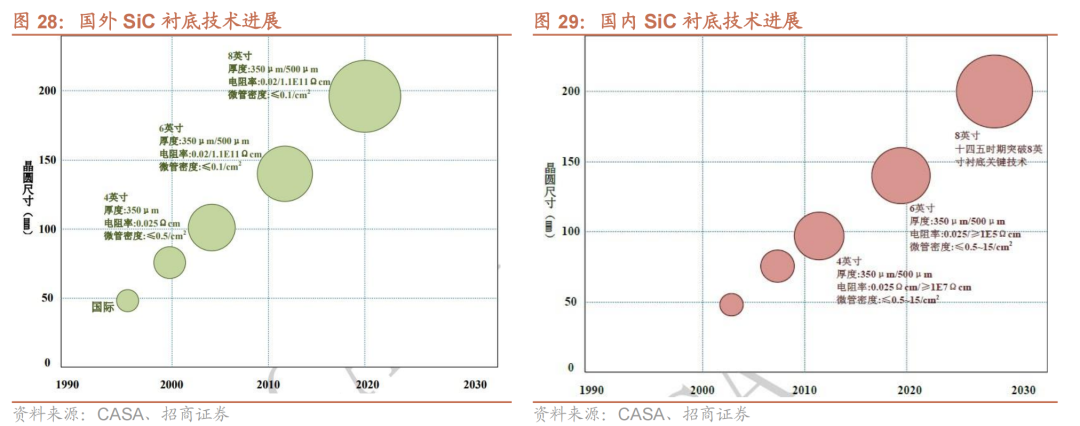
3. High voltage connector: quantity and performance will be improved
At present, the mainstream charging pile is 400V, and the driving parts at the vehicle end are mainly 400V standard. In order to meet the 800V architecture, a large number of 400-800v DC / DC need to be added, so as to increase the amount of connectors. The number of connectors used for new energy vehicles is increased to 800-1000 (the number of connectors for traditional vehicles is about 500).
There are many key points in the design of 800V connectors. It is necessary to meet the problems of thermal management, EMC, vibration and corrosion of vehicles and machines. In particular, the fast frequency of 800V AC leads to EMC problems and interference to other sensitive parts. In the long run, it is inevitable to upgrade the quality of connectors. From the perspective of the value of a single vehicle, the value of a general high-voltage connector per vehicle is about 2000 yuan without the harness. The added high-voltage connector can reach 800-1500 yuan for a passenger vehicle and more than 1500 yuan for a commercial vehicle.
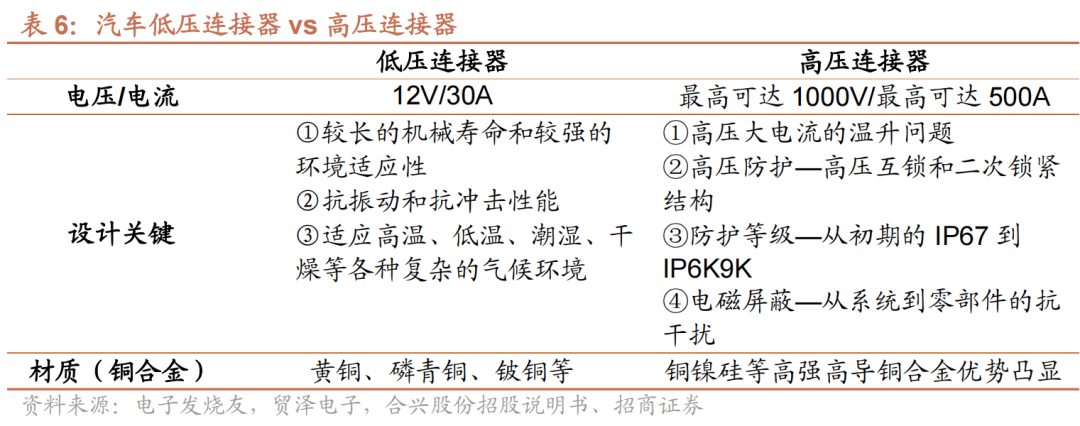
4. High voltage DC relay: high voltage, high performance and added value
At 800V, the product performance requirements are improved and the added value is increased. The relay switches and protects the battery charging and discharging lines in new energy vehicles, prevents equipment failure, short circuit, fire, etc., saves maintenance costs, and controls the on-off of air conditioning, steering, braking, air pump, motor, etc. it is the core element of new energy vehicles.
The voltage and current of the 800V platform are higher and the arc is more serious. The performance requirements of the high-voltage DC relay such as withstand voltage level, current carrying capacity, arc extinguishing and service life are improved. The products need to be improved in contact materials, arc extinguishing technology and other aspects. The high performance of the high-voltage DC relay brings high added value. The value of the passenger car is about 800-1400 yuan. It is expected that the value of the 800V voltage platform will increase by 40%.
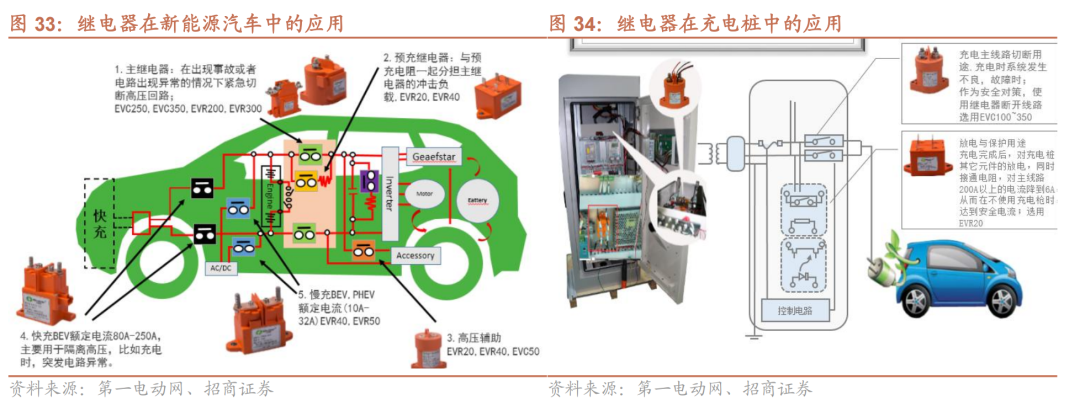
5. Fuse: the penetration rate of incentive fuse is increased, and the value of single vehicle is increased
Fuse is an essential safety device for new energy vehicles.
With the improvement of circuit protection requirements, new fuses are gradually applied. The traditional power fuse cannot be adjusted according to the protection requirements, while the new excitation fuse can stimulate the protection action by receiving the control signal. Compared with the traditional fuse, the excitation fuse can actively cut off the high-voltage circuit according to the working conditions of the vehicle, so that the power supply of the system can be quickly disconnected, the high-voltage end can be isolated, and the system and personal safety can be protected.
The global fuse market is mainly concentrated in foreign enterprises. In 2019, CR3 accounted for 64%. In 2019, the top three fuse enterprises in the world were littlefuse, Bussmann and mersen, accounting for 31%, 24% and 9% respectively, and CR3 reached 64%, with a concentrated pattern.
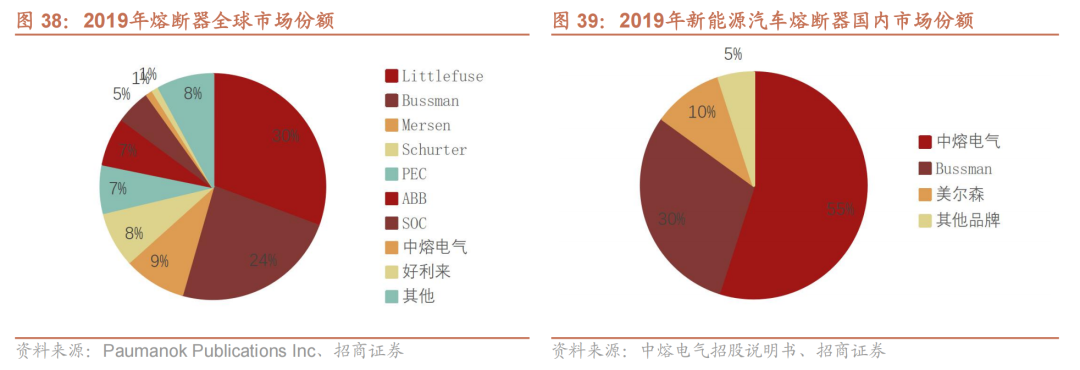
In the field of new energy vehicles, the fuse concentration is high, and Zhongrong Electric is the first in China. According to the China electric vehicle 100 people's Association, in 2019, among the mainstream vehicle enterprises, Zhongrong, Bussmann and mersen accounted for 55%, 30% and 10% respectively, and CR3 accounted for 95%.
The competitiveness of fuse enterprises is mainly reflected in two aspects: first, customized R & D capability. Fuses need to be developed according to downstream customization. New models need to be repeatedly requested and modified. The ability of enterprises to combine upstream and downstream flexible customized R & D is one of the barriers; Second, the efficiency of automatic production. Because of the large number of products in the traditional industry and the scattered downstream, it is difficult for different types of products to be automated. However, due to the large number of new energy automobile fuses and the round tubes, it is easier to realize automation. The highly automated production line plays an important role in improving the scale effect, reducing the defective rate and controlling the cost.
6. Thin film capacitor: voltage withstand and safety upgrade, single vehicle value increase
In the application of new energy vehicles, capacitors are the key components in energy control, power management, power inverter and DC / AC conversion systems. The life of capacitors also determines the life of inverters / converters.
At present, three kinds of thin film capacitors are mainly used in new energy vehicles - DC filter, DC link and IGBT absorption. Among the three kinds of capacitors, DC link capacitor (DC support capacitor) is the most important. In the inverter, DC power is used as the input power supply and needs to be connected to the inverter through the DC bus. The inverter will generate a high pulse voltage on the DC link when it receives a pulse current with a high effective value and peak value from the DC link, which makes it difficult for the inverter to bear. Therefore, it is necessary to select a DC link capacitor for connection, On the one hand, it absorbs the high pulse current from the DC link end of the inverter; On the other hand, it also prevents the inverter from being affected by voltage overshoot and transient overvoltage at the DC link terminal.

Thin film capacitors can partly replace electrolytic capacitors. With the development of power electronics technology in various fields, the application of thin film capacitors is more and more. At present, 660V AC voltage level frequency converters or power units need to withstand 1200V thin film capacitors, which can reach 0.4 yuan/ μ F. Under the condition of equal price, the equivalent capacitance of thin film capacitor can reach half of that of electrolytic capacitor.
Because of the semi permanent life of thin film capacitors, it has great commercial and technical value to replace electrolytic capacitors in this field. There is a large room for improvement of domestic product technology, and the quality and performance of domestic films are quite different from those of foreign famous brands. Therefore, domestic high-quality thin film capacitors have to rely on the support of foreign brands. This is a short board in the field of thin film capacitor manufacturing in China. Only with the improvement of thin film manufacturing technology and products can the entire thin film capacitor manufacturing industry enter a benign development.
7. Systematic technology upgrading brings about the increase of multi component value
Battery: improve the performance of negative electrode and BMS. In the short term, the cost of high-performance silicon carbon negative electrode is high. With the increase of industrialization scale effect, the cost is expected to drop to a reasonable range, and the short-term single vehicle value will increase by about 3500 yuan; Due to the increase of series connection, the value of BMS has increased by about 40%, and the corresponding value is 1680 yuan;
Electronic control and small three electricity: the original Si based power module needs to be replaced with SiC Power module, which will increase the value of the module by about 20%, and the corresponding value is 300 yuan; The value of electric control and small three electricity price with SiC devices and power devices as the core increased by about 15%, and the corresponding value was 1125 yuan; High voltage connector: high voltage has higher requirements on the connector, and the value of high voltage connector per vehicle has increased by about 800 yuan. Components: the single vehicle value of high-voltage DC relay is increased by about 40%, and the corresponding value is 300-560 yuan; The value of fuse per vehicle increased by about 20%, and the corresponding value was 50-60 yuan; The value of single film capacitor increased by about 20%, and the corresponding value was 80 yuan.
4、 Automobile enterprises have laid out one after another, and the industrial trend is clear
1. Huawei: create the first full stack high voltage platform solution in the industry
On April 18, 2021, Huawei put forward a set of relatively clear technical objectives: by 2025, it will launch a fast charging scheme with a voltage platform exceeding 1000V and a power of 600kW, which can achieve 30% - 80% SOC charging performance in 5 minutes.
Huawei launched the AI flash charging power domain high voltage platform solution. Its products include high-voltage vehicle charging system, high-voltage asynchronous electric drive system, high-voltage synchronous electric drive system, high-voltage battery management system, DC fast charging module, three electric clouds and high-voltage thermal management system. The full stack products can help vehicle enterprises realize the rapid loading and landing of high-voltage platform products.
In addition, from the perspective of vehicle cost, the initial cost of using 800V high-voltage devices may be slightly higher than the original 400V voltage platform. At the press conference, Huawei said that the cost of complete vehicles under the high-voltage architecture has risen by less than 2%. In the later stage, based on the rapid iteration of technology, once the industrial chain becomes mature, the cost of the whole industry can be quickly reduced.

2. Xiaopeng automobile: simultaneous layout of vehicle end and pile end
Car end: Xiaopeng automobile has released an 800V high-voltage silicon carbide platform, which can withstand a peak charging current of more than 600A. The platform uses high-energy density and high charging rate batteries, and can be recharged for up to 200km after charging for 5 minutes.
Pile end: 480kw high-pressure overcharged pile. This high-voltage charging pile can give full play to the potential of energy supplement technology of 800V platform. In addition, Xiaopeng overcharge will bring the self-developed energy storage charging technology at the station end, and adopt two methods of energy storage overcharge station and mobile energy storage vehicle to reduce the pressure on the power grid while providing users with efficient energy replenishment experience through peak shaving and valley filling.
Fast charging model: G9, expected to be delivered in the third quarter of 2022.
3. GAC group: simultaneous layout of vehicle end and pile end
On the 2021 GAC science and technology day, GAC group demonstrated the latest super fast charging technology, which is divided into 3C and 6C versions. The 6C high rate fast charging technology can achieve 0-80% SOC in 8 minutes and 30-80% SOC in 5 minutes.
Cell: sponge silicon negative sheet battery and super fast charging battery technology; For the model to be mass produced, the energy density of the cell is more than 280wh / kg, the battery life is more than 1000km, and the energy density of the cell will be more than 315wh / kg in the future. In terms of energy efficiency, the charging power is 220-480kw, the charging time is 8 minutes, and the battery life is 200-400km.
Pile end: 480kw charging pile with large-scale layout. It is expected that by 2025, gac-e'an will build 2000 overcharging stations in 300 cities across the country, penetrating into prefecture level cities and achieving full coverage.
Fast charging model: aion V Plus, launched on September 29, 2021.
4. Great Wall Motor: fast charging battery has been laid out
On December 8, 2021, honeycomb energy, a subsidiary of Great Wall Motors, released the 800V super fast charging battery system at the press conference of the second battery day. It has a battery life of 100 kilometers after 15 minutes of charging and a maximum charging power of 480kw. The flexible high-voltage architecture supports flexible switching between 800V and 400V. The high safety BMS withstand voltage level is up to 5000v. The efficient thermal management makes the battery pack temperature rise less than 20 ℃ under 4C fast charging.
Fast charging model: mecha dragon, expected to be launched in 2022.
5. Lantu automobile: full stack layout high-voltage fast charging system
On September 26, 2021, lantu automobile released the latest 800V high-voltage super fast charging technology, which is a new high-voltage system architecture with power batteries and electric equipment of 800V high-voltage system and no redundant booster device, including super fast charging system, ultra-low system energy consumption, high-performance battery and SiC electric drive assembly, and supports wireless charging. The technology has the ability of extremely fast charging. The high-performance battery of the whole vehicle is equipped with 4C cells. With the support of 360kw super charging pile, the charging rate can be increased by 125%, and the charging time can be 10 minutes and the battery life can be 400 kilometers.
Fast charging model: expected to be mass produced in 2023.
6. BYD: build fast charging technology based on E platform 3.0
E platform 3.0 is a key module with smaller volume, lighter weight, stronger performance and lower energy consumption. The new heat pump technology is standard, and the electric drive system is upgraded to 8-in-1 module, with a comprehensive efficiency of over 89%. The electric vehicle equipped with E platform 3.0 can accelerate as fast as 2.9s, and the maximum comprehensive range exceeds 1000km. The 800V flash charging technology enables the electric vehicle to charge for 5 minutes and travel for 150km. The power consumption per 100 kilometers is reduced by 10% compared with that of the same class of vehicles, and the endurance mileage in winter is increased by at least 10%.



